 The Butia genus is one that makes many hearts beat faster. With the beautifully bowed leaves, this palm has a beautiful appearance. The Butia originates from the south of Brazil and surroundings and forms a bit of the bottom for what is still feasible for a north European climate.
The Butia genus is one that makes many hearts beat faster. With the beautifully bowed leaves, this palm has a beautiful appearance. The Butia originates from the south of Brazil and surroundings and forms a bit of the bottom for what is still feasible for a north European climate.
Naming
There is a lot of confusion in the naming of the Butia genus. The old names suddenly did seemed appropriate a few years ago and some species even exchanged their names to complete the confusion. As a result, it is always important to pay attention to what species your dialing with exactly. Often the old name is still used. Also by specialists.
Species overview:
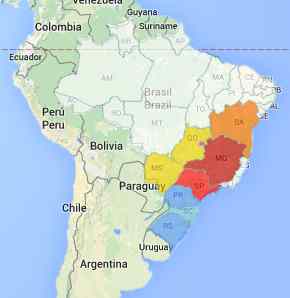 Butia archeri
Butia archeri
(Glassman) Glassman
Small, rare species, native to Brazil: Distrito Federal, Goiás, Minas Gerais, São Paulo – yellow & red states
Grows on the central Brazilian savanna ”Cerrado”
Butia campicola
(Barb.Rodr.) Noblick
extreme small species (40 cm – 1 ft 4 in.) with underground stems. Lacks spines on its petioles.
Brazil: Mato Grosso do Sul – yellow state & east Paraguay
Grows on the central Brazilian savanna ”Cerrado”
Butia capitata
(Mart.) Becc.
The real one! Endagered species, very rare in Europe.
Native to Brazil: Bahia, Goiás, Minas Gerais – yellow & red & orange states
Grows on the central Brazilian savanna ”Cerrado” and “Palm Grove”
Butia catarinensis
Noblick & Lorenzi
(old name: Butia odorata). Butia bonnetii is also just als synonym. Small species (stem to 2m (6 ft 6 in) height and crown to 2m wide) well suited for smaller gardens.
Native to Brazil: Rio Grande do Sul, Santa Catarina – blue states
Grows in the Atlantic rain forests “Restinga”
Butia eriospatha
(Mart. ex Drude) Becc.
Endangered species due to overgrazing, but often sold in Europe. Grows on 1200m (3937 ft) altitude. Thick stem and often greener foliage than the odorata even if there are some variations within the species.
Native to Brazil: Paraná, Grande do Sul, Santa Catarina - blue states
Grows in the Atlantic rain forests on high altitudes “High Altitude Grassland”, “Grassland”, “Palm Grove”
Butia exilata
Deble & Marchiori
Native to Brazil: Rio Grande do Sul - blue state
Grows on the Brazilian “Pampas”
Butia exospadix
Noblick
Brazil: Mato Grosso do Sul – yellow state & north-east Paraguay
Grows on the central Brazilian savanna ”Cerrado”
Butia lallemantii
Deble & Marchiori
(Old name: Butia paraguayensis) Local name Butia-zinho.
Small species with small stems on the base. Butia sp. ‘Rio Grande do Sul’ is a synonym.
Brazil: Rio Grande do Sol – blue state & north Uruguay
Grows on the Brazilian “Pampas”
Butia lepidotispatha
Noblick & Lorenzi
Without or only with a little stem. Only recently discovered (2009).
Native to Brazil: Mato Grosso do Sul – yellow state & Paraguay
Grows on the central Brazilian savanna ”Cerrado” and “Palm Grove”
Butia leptospatha
(Burret) Noblick
Very endangered species, without stem.
Brazil: Mato Grosso do Sul – yellow state & north-eastern Paraguay
Grows on the central Brazilian savanna ”Cerrado”
Butia marmorii
Noblick
Native to north-east Paraguay. Little known about this species.
Butia matogrossensis
Noblick & Lorenzi
Only recently discovered (2008), named after its habitat.
Native to Brazil: Mato Grosso do Sul – yellow state
Grows on the central Brazilian savanna ”Cerrado”
Butia microspadix
Burret
Endagered species. Very small, almost grass like up to 60cm (1 ft 11 in) height.
Native to Brazil: São Paulo, Paraná – blue & red states
Grows on the central Brazilian savanna and Atlantic rain forests
Butia missionera
Deble & Marchori
Accepted name (2011) but also still called as a synonym for the Butia yatay.
Native to Brazil: Rio Grande do Sol – blue state
Grows on the Brazilian “Pampas”
Butia odorata
(Barb.Rodr.) Noblick
(Old name: Butia capitata and still often sold under that name!!).
Synonym: Butia capitata var. odorata. Even on PACSOA it is still to be found under its old name. Leaves varies from green to grayish-green. One of the most hardy Butia’s. Slow growth rate.
Brazil: Rio Grande do Sul – blue state & Uruguay
Grows on the Brazilian “Pampas” and Atlantic rain forests
Butia paraguayensis
(Barb.Rodr.) Baily
Small species with underground stems. The big leaves often bend over to the ground.
Brazil: Mato Grosso do Sul, Minas Gerais, São Paulo, Paraná, Rio Grande do Sul – yellow & red & blue states & north-east Argentina
Grows on the central Brazilian savanna ”Cerrado” and “Palm Grove”
Butia pubispatha
Noblick & Lorenzi
Stemless species, recently discovered (2008).
Native to Brazil: Paraná – blue state
Grows on the central Brazilian savanna and Atlantic rain forests
Butia purpurascens
Glassman
Endangered species. Small stem.
Native to Brazil: Goiás, Minas Gerais – yellow & red states
Grows on the central Brazilian savanna ”Cerrado” and also planted by men
Butia stolonifera
(Barb.Rodr.) Becc.
Native to Brazil: Rio Grande do Sul - blue state & north Uruguay
Grows on the Brazilian “Pampas”
Butia yatay
(Mart.) Becc.
Bigger and thinner stem than the Butia odorata. Leaves bend over more and are more grayish. This is the biggest Butia with 8-12 meters (26-39 ft) height.
Native to Brazil: Rio Grande do Sul – blue state & north-east Argentina
Grows on the Brazilian “Pampas”
Synonyms
There are also a lot of synonyms in use, the list above concerns the accepted species. Below you’ll find a non-limitative list of existing synonyms:
Butia amadelpha (Barb.Rodr.) Burret
Butia arenicola (Barb.Rodr.) Burret
Butia argentea (Engel) Nehrl.
Butia bonnetii Becc.
Butia capitata var. elegantissima (Chabaud) Becc.
Butia capitata var. erythrospatha (Chabaud) Becc.
Butia capitata var. lilaceiflora (Chabaud) Becc.
Butia capitata var. liliaceifolia (Chabaud) Becc.
Butia capitata var. nehrlingiana (Abbott ex Nehrl.) L.H.Bailey
Butia capitata var. odorata (Barb.Rodr.) Becc.
Butia capitata var. pulposa (Barb.Rodr.) Becc.
Butia capitata var. rubra Mattos
Butia capitata var. strictior L.H.Bailey
Butia capitata var. subglobosa Becc.
Butia capitata var. virescens Becc.
Butia capitata subsp. yatay (Mart.) Herter
Butia dyerana (Barb.Rodr.) Burret
Butia eriospatha subsp. punctata Bomhard
Butia leiospatha (Barb.Rodr.) Becc.
Butia nehrlingiana (Abbott ex Nehrl.) Abbott ex Nehrl.
Butia nehrlingiana L.H. Bailey
Butia poni (Hauman) Burret
Butia pulposa (Barb.Rodr.) Nehrl.
Butia punctata Bomhard
Butia pungens Becc.
Butia virescens Becc.
Butia wildemaniana (Barb.Rodr.) Burret
Butia witeckii
Butia yatay var. paraguayensis (Barb.Rodr.) Becc.
Butia yatay subsp. paraguayensis (Barb.Rodr.) Xifreda & Sanso
sources:
Flora do Brasil
The Plant List
Determination
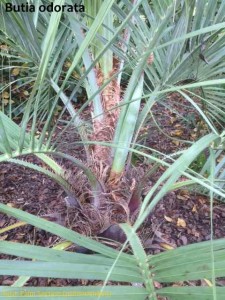
Within every Butia species there can be a lot of variation which can make determination very difficult. The three most used species in Europe are the Butia odorata, Butia eriospatha and Butia yatay. The yatay is easily recognized by its grayish foliage. When having access to the seeds it becomes a children’s play . . its seeds are oblong. Those of the odorata are round. To separate the odorata from a eriospatha you should look at the leaf bases. The leaf bases of the odorata has a purple-brown coloring where those of the eriospatha are much greener just as the rest of the foliage of this species. The tomentum, the fine hairs on the petioles, are also colored slightly different.
The foliage color on its own isn’t really reliable for determination as the exposure can have some influence to the color. The more it will be exposed to full sun, the whiter the leaves will be.
CARE
General
Butia’s are fairly slow growers. Especially in the early years. If you have the opportunity, it is would be more interesting to start of directly with a slightly larger subject. They need quite some heat to grow and therefor only grow later in the season. This is why the should be planted on the most sunniest place in your garden.
For a spot in the garden, only the Butia odorata, Butia eriospatha and Butia catarinensis seem the be appropriate if protected! Some expercience with winter protection is therefore required to be successful. It is hardy to about -10/-12°C (14/10°F) but also needs a dry place well ventilated. A temporary roof above the palm is a must. Our preference for a spot in the garden goes to the Butia odorata. This species seems to have just a little more resilience than the other species.
In a container
The other species are especially suitable for holding in a container. The summer months are not a problem. In the winter months it is important that the palm is kept in a sufficiently ventilated place.
All together, the Butia is a great genus but definitely not recommended for beginners.
Source: “Brazilian flora” – Lorenzi 2010, PACSOA, Kew. Contributions by “palmgek” & La Palmeraie ©




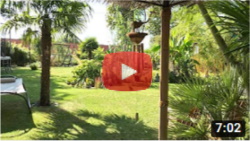






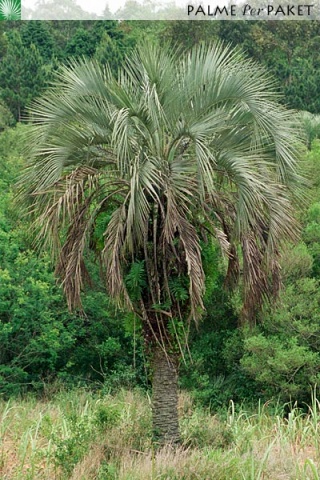
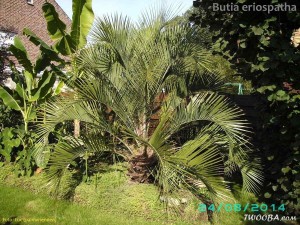
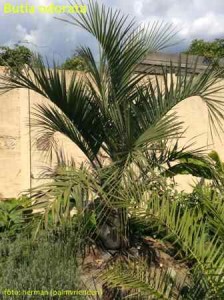
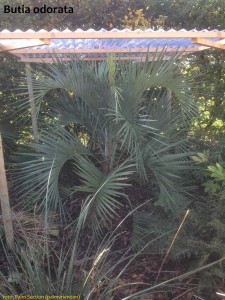
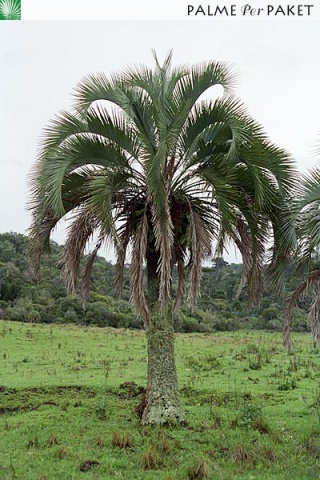
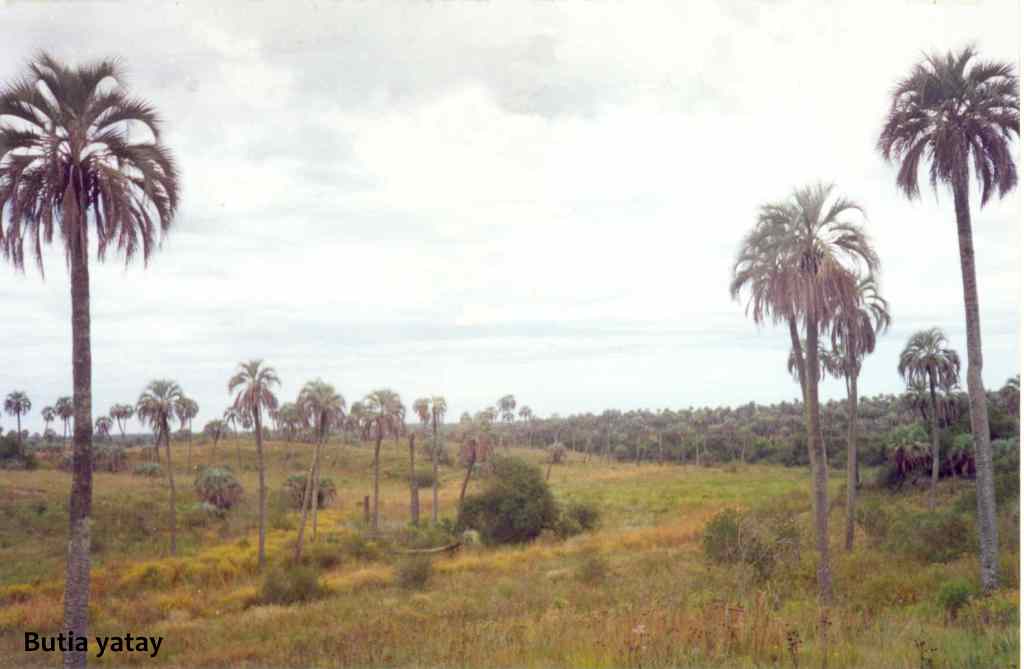
Reactie door santiago mailhos — 28 november 2020 21:05 @ 21:05
In the northwest of Uruguay we have a beautiful population of Butia yatay, in the east, on the border with Brazil, extensive palm groves of Butia odorata.
Reactie door lapalmeraie — 30 november 2020 11:50 @ 11:50
Hi
Wow! Lucky you
Must be a really beautiful region.
Kind regards
La Palmeraie